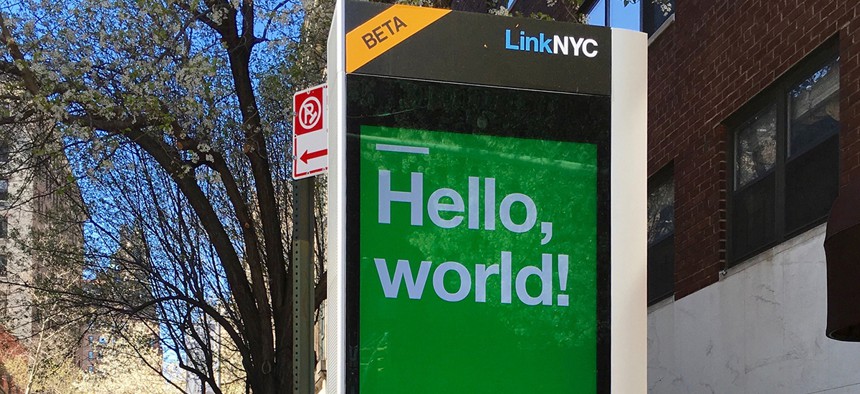LinkNYC Pulls Web Access From Wi-Fi Kiosks

Flickr user Scott Beale
The company is removing web browsing from its public tablets because users have become way too comfortable.
The swanky new kiosks from LinkNYC were touted as the future of payphones, with high-speed Wi-Fi capabilities that would help Mayor Bill de Blasio realize his vision to give every New York City resident and business free broadband access by 2025. The company rolled out roughly 400 kiosks to skeptical New Yorkers after announcing its plan in 2014, and even sent out a squad of “Wi-Fi ambassadors” to show passersby how they work.
A little over a month later, the company has announced it is removing web browsing from all the tablets attached to the kiosks because people are hogging them, sometimes even pulling up chairs. This comes after reports surfaced of people “inappropriately” using the public kiosks to watch porn.
#linknyc #free #wifi #charger #kiosk #homeless #street #streetphoto #streetphotography #lensculturestreets #nyc #ne… pic.twitter.com/7Pre8d31JI
— Farsad Ghaffarian (@farsad_gh) August 15, 2016
“The kiosks were never intended for anyone’s extended, personal use and we want to ensure that Links are accessible and a welcome addition to New York City neighborhoods,” the company said in a statement to reporters. Rather, they were intended for people who needed to look up directions or—as old payphones faithfully allowed people to do back in the days—to make a quick phone call.
When the program initially rolled out, concerns were more about police taking advantage of the free network to pry into the online activities of residents oflow-income communities, whom The Atlantic reported were most likely to use the free internet.
This doesn’t mark the end of LinkNYC, however. (Not yet, anyway.) The company is assuring the public it is working with the city find other solutions, like enacting time limits on browsing. Meanwhile, other features—“free phone calls, maps, device charging, and access to 311 and 911”—are still available. And so far, aside from these abuses, the program has benefitted a good number of people, according to LinkNYC’s statement:
LinkNYC is … already giving nearly half a million people access to the fastest Wi-Fi publicly available in NYC and providing tens of thousands of free phone calls, device charging, and directions every single week.
But this announcement joins the ranks of other technology gaffes that prove it only takes a handful of people to ruin something nice for everyone. And it illustrates there’s a lot of work to be done before the city of the future becomes a working, sustainable reality.
*This post has been updated.
NEXT STORY: Apple Just Reinvented Its Biggest App


